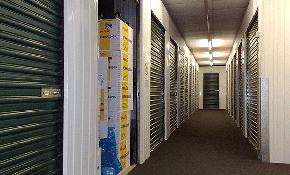CALABASAS, CA-Although consumer spending in the retail sector took a hit in January, with poor weather largely to blame for a 0.4% decline in sales, the sector on the whole is benefiting from a strengthening economy, according to a Marcus & Millichap Real Estate Investment Services research brief. However, the firm notes that qualms remain about the prospects for retail, especially in view of the slowing pace of personal income growth.
“The impact of weak income growth is becoming a larger concern for the long-term prospects of retail sales,” according to MMI. “Shoppers’ budgets are increasingly stretched to maintain current consumption levels, which will only be maintained through income growth or the accumulation of debt.”
On the other hand, the firm’s resarch brief notes that core retail sales are 14% above the pre-recession level, “while household debt is more than 10% below the previous peak. Revolving credit surged at the end of last year, an indication that consumers are confident in their prospects and could support retail spending levels.”
And while retail spending has returned, the impact on operating fundamentals at brick-and-mortarstores has been “muffled,” MMI says, by “the sheer size of the space overhang and number of retailers going dark. Even now, more than four years after the end of the recession, several national chains remain in jeopardy, including Red Lobster and JCPenney.” Even so, MMI predicts that vacancy in the sector will decline 70 basis points this year to 6.5%.
Since both warehousing and manufacturing rely heavily on the retail sector, “a pause in spending could cool the impressive gains in the industrial commercial property sector over the past few years,” MMI says. At present, industrial’s 8.2% vacancy is about the same rate as it was prior to the recession. If the US economy expands by more than 3% in 2014, industrial vacancy will retreat another 100 bps into “the low-7 percent range.”
As for the consumers who ultimately drive the bus as far as both retail and industrial demand are concerned, they’re “juggling new priorities, including the cost of government-mandated health insurance, rising interest rates resulting from the Fed ‘taper’ of quantitative easing, and a correction in the equity markets,” according to the research brief. The still-sluggish pace of hiring is another hurdle. “When strong employment growth resumes and the skies clear, shoppers should return.”

















 Copyright © 2024 ALM Global, LLC. All Rights Reserved.
Copyright © 2024 ALM Global, LLC. All Rights Reserved.